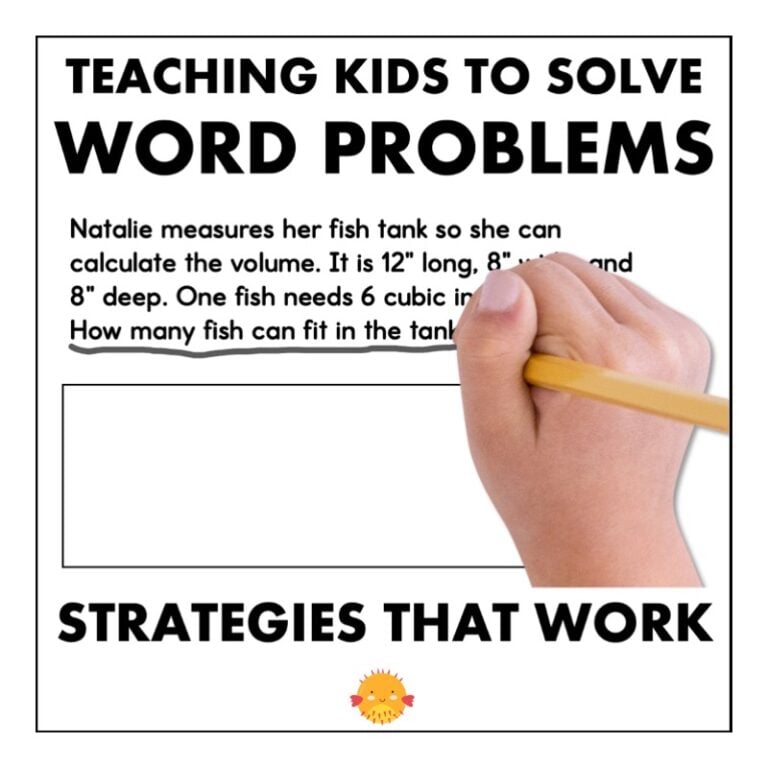
How to Teach 3rd Grade Division and Build Strong Math Skills
This week my class is learning to divide. Figuring out how to teach 3rd grade division can be tough, I’ll tell you that! I recently noticed that my students are having a hard time interpreting certain phrases in division problems. Things like “rows of 3” were really tripping them up. While they all understand what “3 rows” looks like, they can’t seem to make sense of “rows of 3”.
I want them to understand division word problems no matter how they’re written because in fourth grade they’ll be seeing a lot of them with even larger numbers. Not to mention all of the problem solving they’ll have to do in real life.
So I’m going to share some ideas on how to teach 3rd grade division so they really get it (and I don’t just mean the correct answer).

How to Teach 3rd Grade Division
A strong foundation in division starts with a conceptual understanding of multiplication. If students understand that multiplication represents combining equal groups to find the total number of objects, they can understand that division represents taking that total and breaking it apart into equal groups.
.
Introducing Concepts of Division
Today during math workshop, I got out some math blocks and had the class build visual representations of some tricky phrases that they might encounter in both multiplication and division activities. Then I gave them a worksheet I made up so they could draw their model and write the corresponding multiplication and division equation. This was to help them understand fact families and how multiplication and division are related.
What I thought might be a quick activity that they would rush through turned out to be really challenging.
I found that a lot of the kids were mixing up rows and columns, or making rectangular arrays when it called for equal groups. This activity let me address those misunderstandings quickly and easily just by moving around the room and observing the kids working.
However, the biggest issue that I saw was a few students who would multiply no matter what. If the task said “14 blocks arranged in groups of 2”, they would write 14 x 2 = 28.
So, while everyone else was working, I called a small group to my table. Most of them were able to see their mistake once I worked through the problem with them and the rest of the activity went smoothly. A couple still weren’t getting it and I know that’s where I need to focus my attention right now during guided math groups.
This is the worksheet I use for this division activity.
⏬ You can download a copy to use with your students from the Free Resource Library.

.
Reasonableness of Answers
The students I mentioned above weren’t able to recognize the reasonableness of an answer. That’s a really important prerequisite to having a good understanding of division.
Some division problems involve an unknown group size while others have an unknown number of groups. But one thing that all division problems have in common is that they involve a known quantity being split into equal shares.
➡️ Math Rule to Teach: In division, the big number is always what is being divided or shared.
The “big number” is known in a division problem and the answer will NEVER EVER be larger than that number (well, until we start dividing by fractions or decimals, but we’re talking about how to teach division in 3rd grade here).
So when students are solving a division problem, they must be able to look at their answer and ask themselves, “Is that number reasonable? Could that possibly be the correct answer or is it just too big?”
I know what you’re thinking…. what about when a division sentence has an unknown quantity as the dividend? Like this…

Well, that’s really a multiplication problem, isn’t it? Remember, in multiplication, we know the number of groups and the size of the groups. We’re just looking for the total. And that’s exactly what the above equation involves. It’s just written in a different way with a division symbol.
So if students understand that division always involves the largest number being split up into equal parts, they can easily assess the reasonableness of their answer.
➡️ Math Rule to Teach: In division, the largest number is always followed by the division symbol no matter how the problem is written. In multiplication, it is always immediately before or after the equal sign.
.

.
If the larger number is the missing quantity, it’s really a multiplication problem and they should just multiply the two given numbers:

To help my 3rd graders understand the different ways multiplication and division problems can be written and teach them to always know where the largest number will be, we practice analyzing equations.
This activity isn’t about solving to find the answer. All I want to see is if my students know where the largest number will be positioned in the equation . If they aren’t sure, we use blocks to build a model of the equation to find out.

This is a worksheet I created to assess my students’ understanding of this concept. They look at each problem and circle where the largest number would be found.
⏬ Download a free copy from the Resource Library.
.
You can also use word problems for this activity:
Present students with a scenario. Ask them if they will end up with a larger or smaller number. For example, “If I want to run a total of 12 miles and I run 3 miles each day, will it take me more or less than 12 days to run the whole distance?” This is a great way to help students visualize the overall concept of division and determine what would be a reasonable answer.
.
Division Strategies
Once students understand how division is closely related to multiplication, it’s time to start working on specific division strategies.
I hope my students will eventually learn their basic division facts from memory (and their times tables), but until then, they need tools to help them divide numbers. It’s important to teach third graders different methods to solve so they can become fluent with concepts of division. You don’t want them to get stuck on doing things just one way.
One strategy to solve division is by using a number line. Teach students to find the big number or total on the number line and circle it (or write it if using an open number line).
Then, whatever other number is in the problem (groups or quantity in each group) determines the size of each “jump” on the line. They make those equal jumps until they land on zero.
All that’s left then is to count how many spaces were inside of each jump. Here is an example:

.
Visual models are also a very valid way to divide.
I teach my students that division is like dealing cards. The big number in the problem is the number of card in my deck. The smaller number tells me how many people I’m dealing my cards to. After I deal them out, I can easily see how many are in each group (or how many cards each person got).

Students can draw circles like this and put one tally mark in each circle until they get to the total number in the problem.
This “dealing out” method will help them find the number in each group every time.
.
When considering how to teach 3rd grade division, I encourage you to includes tape diagrams or bar models as a strategy. They are great for solving one- or two step word problems and help students visualize how the numbers in an equation are related. You can read all about using them here: Tape Diagrams in Math: A Problem Solving Strategy
The more ways kids know how to approach a problem, the easier it will be for them to grasp abstract concepts and start moving towards mental computation. This is super important for when they start using area model and long division in 4th grade and beyond.
One thing I do not like to do, and strongly advice against, is teaching students to rely on key words in math problems. There are some really good reasons to avoid this strategy that I talk about in this blog post: Stop Teaching Keys for Math Word Problems
.
Developing Fact Fluency
The last step in how to teach 3rd grade division is fact fluency. It might seem that memorizing math facts at the beginning is smarter, but kids really need conceptual understanding first. That is the bridge between math and a real-world situation. But once they have a solid grasp of what division is and how to find the answer, I start working on fact fluency.
How do you do that? Well that’s really another whole blog post for another day. But I will say that my favorite way to build fluency is through games. Having fun takes the work out of memorizing.
.
So what is the best way to teach division?
When deciding how to teach 3rd grade division in the most effective way, consider following this progression:
- Make sure your students understand multiplication.
- Teach that dividing means splitting a quantity into equal groups.
- Practice dividing groups of manipulatives or concrete objects.
- Move to visual representations (drawings, number lines, tape diagrams).
- Relate the models to equations.
- Work on fact fluency.



